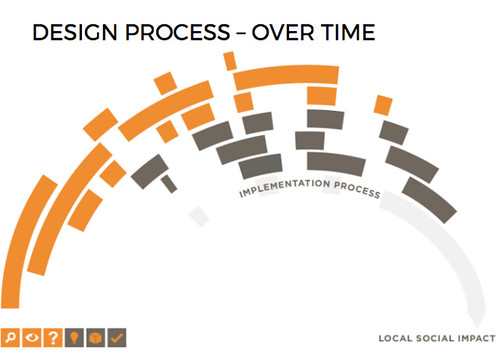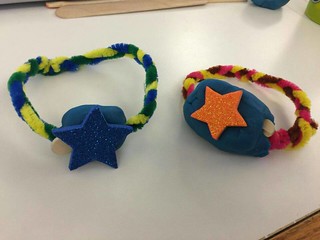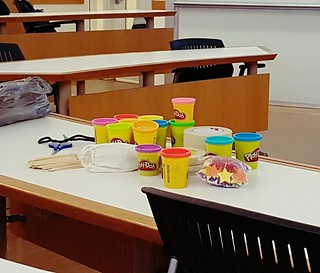Design. A word that may be daunting to some and may be invigorating to others. Every aspect of our daily lives, from the food we eat to the products we use every day, have been thoroughly thought about and crafted to fulfill the epitome of its purpose. The stages in which a product comes to fruition are very extensive and is comprised of thousands of hours, dollars and a lot of people coming together for the common goal of solving a problem. The design process that I will talk about today will be focused on problems, from identifying them all the way to testing with users. It is extremely important to address a NEED first before coming up with a solution because if there is no one that needs to use it, then no one would want it.
This is where I have seen people in BADM 395 fail quick and then have to start from scratch, it is creating a solution before thinking of the problem you are trying to solve. Human-centered design thinking is exactly as it sounds, by thinking of the humans that the product is intended for, then can you truly create something that is worth other people’s time, money and effort in utilizing the product. The design thinking process will help you be able to approach a problem you see in the community and create a product that will enable you to make it meaningful and to fully fulfill its purpose through iterations and critiques. The idea of this is to start thinking outside the box and sometimes take a few steps back in order to create the best of the best. The following steps outline how the Design for America human-centered design thinking process has been helpful for students all over the country.
Step 1. Identify
Goal: Defining targeted problem spaces you will tackle to focus future research. This is a crucial step in creating something that will create the largest impact in the community. In order to build something, there has to be a need and identifying it is the first step. You want to be able to take large challenges and break them into smaller parts that are easier to manage and tackle. The issue of campus safety, for example, is very large, but you can examine it by looking at safety in classrooms, on the sidewalks or even in dorms. By analyzing assumptions and initial knowledge, you can see what knowledge you are lacking and where to find it. Think of the local organizations and mentors that are available to help you with this challenging area as well. For the example above, the police department and campus security may be helpful resources.
Step 2: Immerse
The next step is to be able to immerse yourself into your targeted audience. To empathize with stakeholders and uncover insights to deeply understand your problem spaces. The idea is to fully wrap your head around the problem space from every aspect and every party involved. For the example above, the idea is to talk to students, police, and people in the community that are potentially at risk from criminals or even feel unsafe in their areas. This will give you a much more well-rounded idea of identifying common themes, stories, and existing solutions. The UIUC Makerlab, for example, has the extremely expensive equipment and so talking to people in their and how they keep it safe would be helpful too.
Step 3: Reframe
The goal of reframing is to define the change you want to make in the world and determine what your solution needs to accomplish to get there. This is to define desired qualities as well as narrow down your focus. This also allows you to take a step back and gauge how you define a successful impact. As it pertains to BADM 395, the idea of reframing means that the product you create will ultimately solve your problem in an efficient manner.
Step 4: Ideate
This is another important step, brainstorming and generating a variety of ways that make an impact and exploring alternative solutions is extremely important. Some students jump directly to this step and that is where they falter since they do not know what existing solutions may be out there. Thinking of any idea, no matter how big or small means that there is room for innovative ones as well as the possibility of ideas colliding and collaborating together.
Step 5: Build
Making a variety of tangible prototypes to communicate and test your ideas will allow you to see where your design falters and where it can be heavily improved. Without many iterations and samples, one can never perfect a product. Take the David Kelley example of the Apple mouse, for example, he tested and built hundreds of mouses in order to find what was wrong with each version and how to make it better. Getting started with low fidelity prototypes lets you envision your product and lets you fix potential problems quickly before they arise and cause more problems down the line.
Step 6: Test
Getting feeback to uncover insights and develop the nextsteps to improve a solution and product is extremely important. Being able to take this product into the homes and talk to the potential users is important since it allows your target audience to actually see a tangible product and envision if they can see themselves using it. This also allows you to obtain expert input and quotes about the solution to give you a much deeper and well-rounded way to go about the product. Testing a product in the BADM 395 course before it comes to fruition is important since we have to present it at the end of the year to our fellow classmates. This means that ensuring the product works for its intended purpose is extremely important.
To wrap up the design process, you have to keep in mind that these steps are not a one-way road, it is extremely important to constantly go back and forth to make corrections and improve designs with reiterations and consulting the users constnatly. By involving experts and professors in your process of creating the BADM 395 product, you will gain a deeper understanding and identify where and how you can fix it, so your initial idea becomes alive and ready to change the world.






